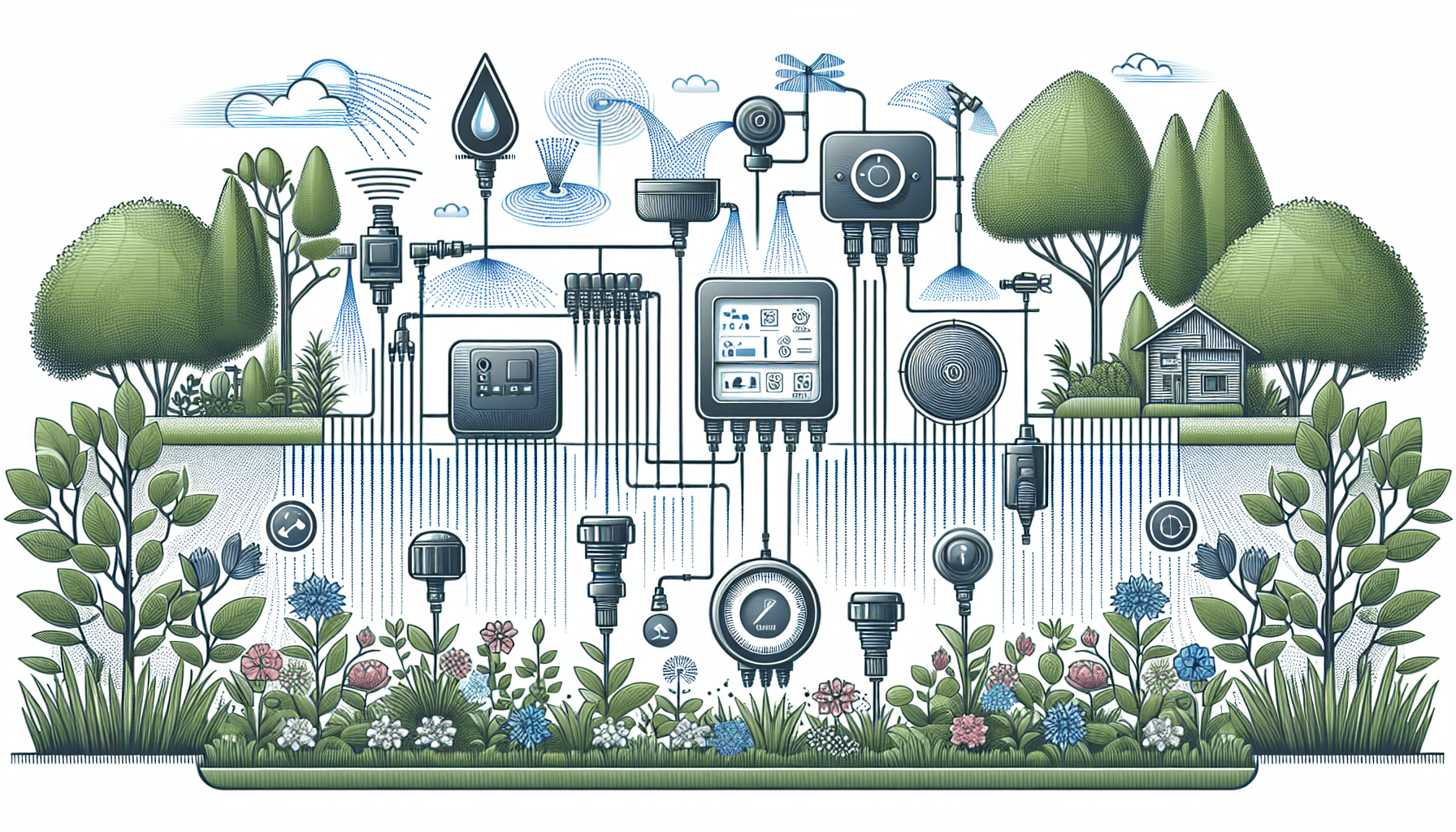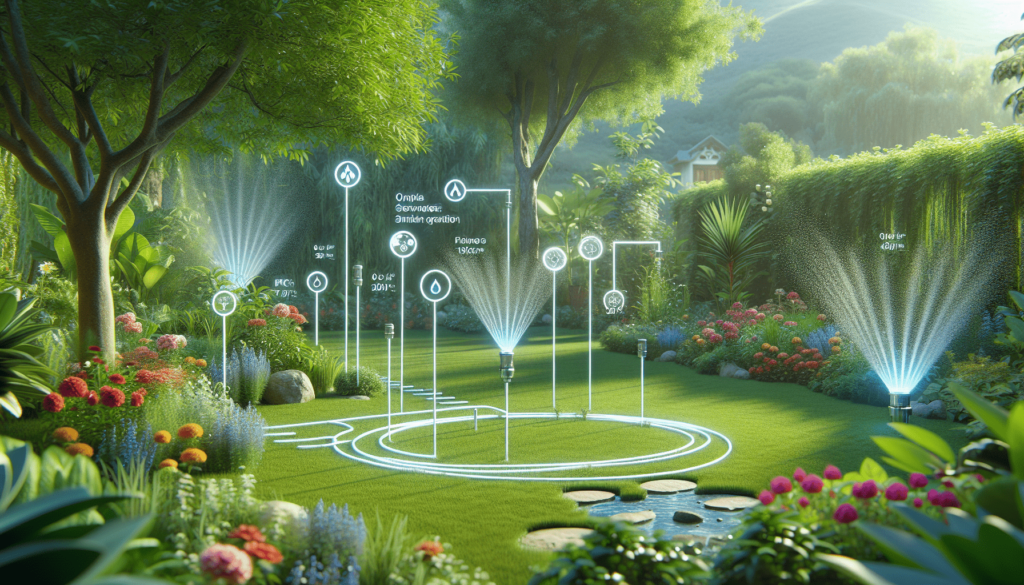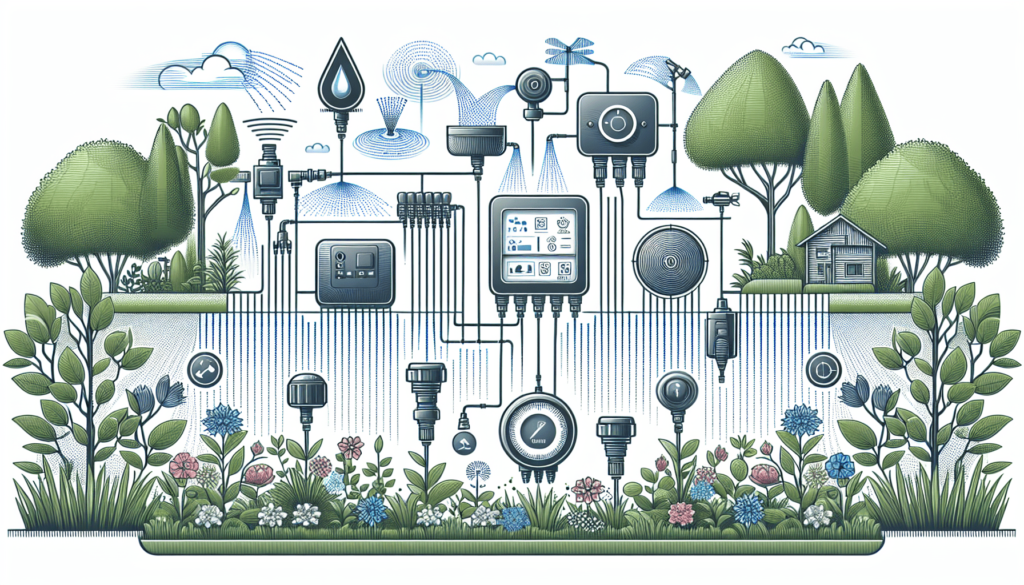
Imagine saving time, conserving water, and maintaining a lush green garden all with the help of modern technology. “The Beginner’s Guide to Setting Up Your First Smart Irrigation System” is the perfect place to start if you’re looking to achieve all these. It offers a step-by-step guide to help you set up your initial smart irrigation system effortlessly. The article unpacks everything you need to know, from choosing the right equipment to making sense of complex technologies involved. Trust that by the time you’ve finished reading, you’ll be ready to transform your garden into a technologically advanced oasis.

Understanding Smart Irrigation Systems
You might have heard of smart irrigation systems, but what do they really entail? Let’s dive in.
What is a Smart Irrigation System?
A smart irrigation system is an automated water management tool. It uses sensors and data analytics to regulate the watering of your landscapes. This smart technology offers solutions to traditional watering methods, ensuring that your garden gets just the right amount of water it needs while conserving water and saving you money in the long run.
Types of Smart Irrigation Systems
Smart Irrigation Systems come in different types. Weather-based systems, for instance, adjust your irrigation schedule based on actual local weather conditions. Soil moisture-based systems, on the other hand, use sensors to measure the moisture in the soil and then irrigate accordingly. These systems might work independently or can be integrated together for a more comprehensive solution to watering your garden efficiently.
Benefits of Using a Smart Irrigation System
There are numerous advantages to using a smart irrigation system. It saves water by delivering the right amount, reducing wastage. This will in turn save you money on your water bill and contribute to environmental conservation. These systems also boost plant health by lowering disease risk that comes with over-watering. Through the integration of mobile apps, you can easily control your watering schedules from anywhere, providing convenience and peace of mind.
Planning Your Smart Irrigation System
Before you can pick out a system, you need to assess your specific needs.
Assessing Your Garden Space and Needs
Start by observing your garden size and the types of plants you have. Different plants require different amounts of water. Hence, you will need a system that caters to the needs of all types of plants in your garden. Look at areas that need more water and those that need less, and take note of high and low points in your garden space.
Considering Your Local Climate and Weather Patterns
Your local climate and weather patterns directly affect your plant watering needs. If you live in a colder area, your plants won’t need as much watering as those in a way warmer climate. So, you should choose a smart irrigation system that adjusts your watering schedule accordingly.
Determining Your Budget
Just like any other investment, setting a budget is crucial. Remember that the cost of the smart irrigation system isn’t just about the buying price. Consider also the long-term maintenance cost and whether it fits within your budget range.
Choosing the Right Smart Irrigation System
Once you have the preliminary knowledge and your needs outlined, now let’s delve into the process of picking the right system for you.
Factors to Consider When Choosing a Smart Irrigation System
Start by making a checklist of the features that you want in your smart irrigation system. It could be a mobile app for remote controls, different types of sensors, or integration capabilities with other smart home systems. Consider the brand and model that matches your feature checklist, satisfies your budget, and caters to your garden size as well as plant types.
Comparing Different Brands and Models
When choosing a brand or a model, compare the features, durability, and user reviews. Some brands might be pricier yet offer advanced features and longer durability compared to others. Read the reviews of other users for insight.
Understanding Irrigation System Ratings
Check the WaterSense label on your preferred irrigation system. A WaterSense labeled system is independently certified to meet EPA’s water efficiency and performance criteria.

Purchasing Your Smart Irrigation System
Now that you’ve made your choice, it’s time to go shopping.
Where to Buy a Smart Irrigation System
You can buy a smart irrigation system online or at a physical store. Buying online can offer a wider variety of options and models. Always check and make sure you are buying from a credible site or store for quality assurance.
Understanding Warranty and Support Options
Review the warranty and support options before making your purchase. A longer warranty period and readily available customer support signal good quality and reliability of the system.
Preparing for Installation
Ensure you get everything in place for a smoother installation process. Arrange for any needed tools and review any guides or manuals that come with the system.
Installing Your Smart Irrigation System
With your system ready, it’s now time to set it up.
Basic Steps for Installing a Smart Irrigation System
Start your installation by setting up the main hub containing the controller. From there, you proceed to set up the piping and sprinklers in areas that need watering. Lastly, you’ll install the sensors in the garden.
Tools Needed for Installation
Our guide provides a list of tools you might need including a shovel, pipe cutter, screwdriver, among other tools specific to the type of system you have purchased.
Safety Precautions to Take
Ensure you follow all safety precautions during the installation process. These may include turning off water supply, wearing safety glasses, gloves, and more.
Connecting Your System to a Mobile App
Now, let’s get your system connected to a mobile app for easy controls.
Choosing the Right App
Most smart irrigation systems come with their own app. The manufacturer’s app will ensure optimal compatibility and functionality with your system.
Setting Up Your Smart Irrigation System on the App
Once you’ve downloaded the app, you will be guided on setting up your system on the app. This includes adding your irrigation system to the app, labeling different zones, and setting basic schedules.
Understanding Features of the App
Explore and understand the different features on your app. These can include scheduling, setting watering preferences, alert settings, remote access, and more.
Setting Up Sensors and Controllers
It’s time to fine-tune your controllers and sensors.
Types of Sensors for Smart Irrigation Systems
The common types include rain sensors, soil moisture sensors and wind sensors. These sensors feed data to your smart irrigation system so it can better decide when and how much to water your garden.
Installing and Configuring Sensors
Installation instructions for sensors are typically included in the user manual of your irrigation system. Usually, moisture sensors will require to be buried in the ground, while rain and wind sensors have to be positioned upright and in a clear, open space.
Understanding and Configuring Controllers
Controllers are the brain of your smart irrigation system. They use the data from the sensors and the schedules you set up on the mobile app to control the irrigation. Take the time to familiarize yourself with the controller settings to ensure optimal operation.
Programming Your Irrigation Schedules
How do you tell your system when and how much to water your plants? Let’s find out.
Determining Watering Needs for Different Plants
Different plants require different amounts of water. Therefore, it is crucial to know the watering needs for each kind of plant in your garden and set up zones that have similar watering needs.
Setting Up Watering Schedules on the App
After understanding the watering needs for all your plants, use your mobile app to set watering schedules for different zones in your garden. This way, every plant will get just the amount of water it needs.
Adjusting Schedules Based on Actual Weather
The smart irrigation system is designed to adjust your watering schedules according to the actual weather condition. This means even when you set a schedule, the system will check weather conditions and adjust accordingly.
Maintaining Your Smart Irrigation System
Just like any other system, your smart irrigation system requires regular maintenance.
Routine Maintenance Tasks
Some routine tasks may include checking and cleaning the filters and nozzles, inspecting system leaks, adjusting the sprinklers, and checking the controller and sensors for correct operation.
Replacing Broken or Worn Out Parts
If some parts of your system start to fail or wear out, it’s best to replace them promptly to avoid bigger issues down the line.
Troubleshooting Common Issues
Most smart irrigation systems come with a detailed troubleshooting guide which you can follow in case of any issues.
Improving Your Smart Irrigation System
You can always take your system to another level.
Upgrading Your System
You can upgrade your system by adding more advanced sensors, integrating with other smart home systems among other options.
Adding Additional Features or Sensors
Based on your system’s performance, you might need to introduce more features or sensors. Different types of sensors can provide more specific data and help your system be more efficient.
Integrating the System with Other Smart Home Devices
For an even smarter home, you can integrate your irrigation system with other smart home devices like Google Home, Alexa, etc., to allow voice commanding and scheduling.
In summary, a smart irrigation system is a great investment that not only saves water but also ensures the health and beauty of your garden. With this guide, you are more equipped to choose, purchase, and maintain your own smart irrigation system. But remember, every garden is unique, and it’s always best to tailor your choices to your specific needs and conditions. Happy gardening!
